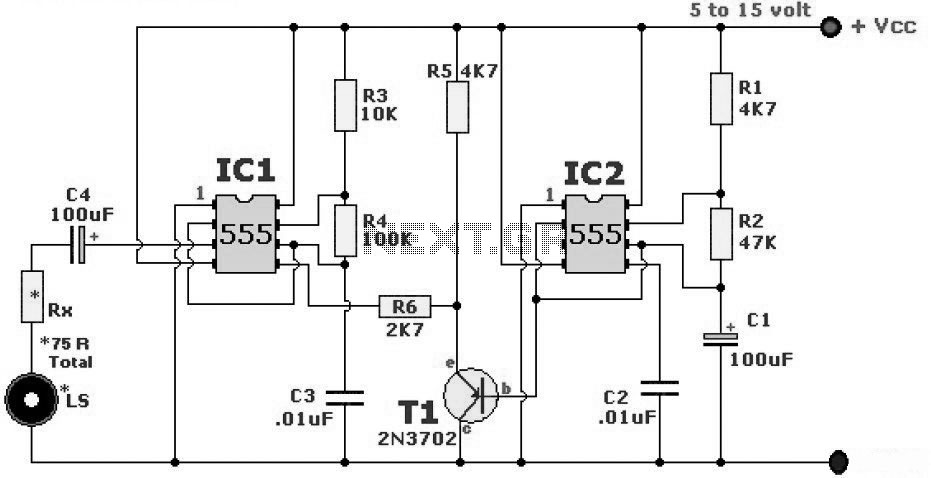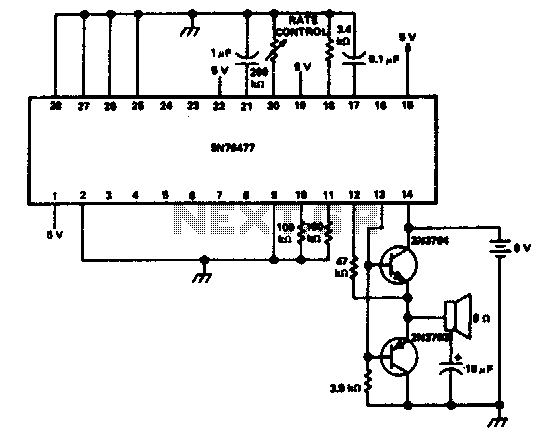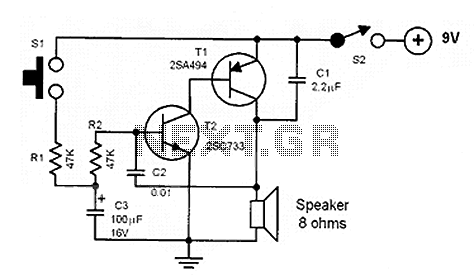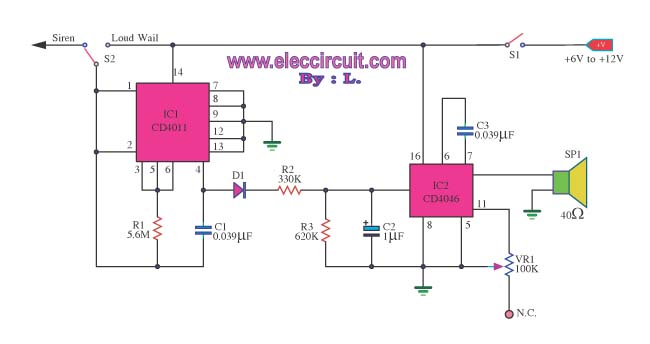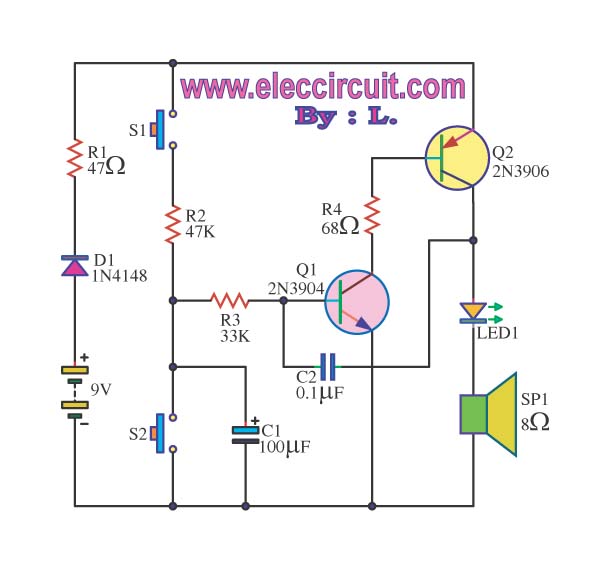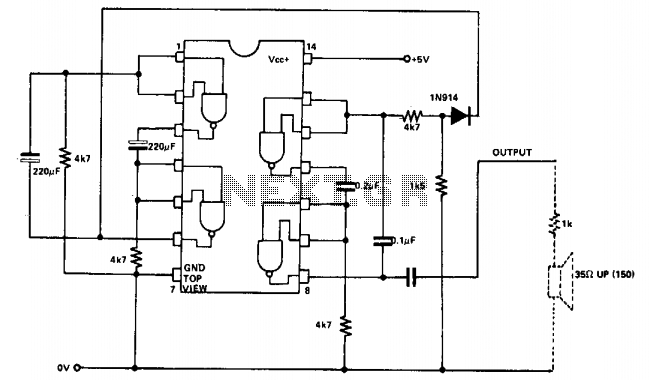
Police Siren

The first integrated circuit (IC) on the left is configured to operate at a frequency of approximately 1 Hz. A 47 µF capacitor is charged and discharged in a periodic manner, resulting in a gradual increase and decrease of voltage across the capacitor.
The described circuit functions as a simple oscillator, utilizing the properties of the capacitor and the integrated circuit to generate a square wave signal at a frequency of 1 Hz. The IC is likely configured in an astable multivibrator mode, where it continuously switches between its high and low states. The charging and discharging of the 47 µF capacitor is central to this operation.
As the capacitor charges through a resistor connected to the output of the IC, the voltage across the capacitor rises until it reaches a threshold level that triggers the IC to switch states. This transition causes the output to go low, allowing the capacitor to discharge through another resistor. The discharge process lowers the voltage across the capacitor until it reaches a lower threshold, prompting the IC to switch back to its high state, thus restarting the cycle.
The choice of a 47 µF capacitor suggests a design consideration for the timing characteristics of the circuit. The time constant, determined by the resistance in series with the capacitor and the capacitance value, dictates the rate of charging and discharging. This is calculated using the formula T = R x C, where T is the time period, R is the resistance, and C is the capacitance. For a frequency of approximately 1 Hz, the values of the resistors must be selected carefully to ensure that the total time period matches the desired frequency.
This circuit can be utilized in various applications, such as in timers, flashing LED indicators, or as a clock pulse generator for other digital circuits. The simplicity of the design allows for easy modifications, such as changing the frequency by adjusting the capacitor value or the resistors used in the charging and discharging paths. Proper consideration of component tolerances and voltage ratings is essential for ensuring reliable operation over time.The first IC (left) is wired to work around 1Hz. The 47uF capacitor is charged and discharged periodically and the voltage across it gradually increases and decreases periodically. 🔗 External reference
The described circuit functions as a simple oscillator, utilizing the properties of the capacitor and the integrated circuit to generate a square wave signal at a frequency of 1 Hz. The IC is likely configured in an astable multivibrator mode, where it continuously switches between its high and low states. The charging and discharging of the 47 µF capacitor is central to this operation.
As the capacitor charges through a resistor connected to the output of the IC, the voltage across the capacitor rises until it reaches a threshold level that triggers the IC to switch states. This transition causes the output to go low, allowing the capacitor to discharge through another resistor. The discharge process lowers the voltage across the capacitor until it reaches a lower threshold, prompting the IC to switch back to its high state, thus restarting the cycle.
The choice of a 47 µF capacitor suggests a design consideration for the timing characteristics of the circuit. The time constant, determined by the resistance in series with the capacitor and the capacitance value, dictates the rate of charging and discharging. This is calculated using the formula T = R x C, where T is the time period, R is the resistance, and C is the capacitance. For a frequency of approximately 1 Hz, the values of the resistors must be selected carefully to ensure that the total time period matches the desired frequency.
This circuit can be utilized in various applications, such as in timers, flashing LED indicators, or as a clock pulse generator for other digital circuits. The simplicity of the design allows for easy modifications, such as changing the frequency by adjusting the capacitor value or the resistors used in the charging and discharging paths. Proper consideration of component tolerances and voltage ratings is essential for ensuring reliable operation over time.The first IC (left) is wired to work around 1Hz. The 47uF capacitor is charged and discharged periodically and the voltage across it gradually increases and decreases periodically. 🔗 External reference
